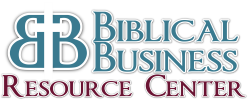We live in a time of unprecedented change. The wise business person will put disciplines and processes in place to keep the organization away of what’s next. We’re recommending a SCAN meeting.
Most leaders understand that the world is changing rapidly. The actual details are even more terrifying than that which we intuitively sense.
Our generation is facing change to such a degree that it is unprecedented in the history of mankind. Of course, individuals and small groups of people have lived through mind-boggling change. Time of war and natural disasters, for example, have uprooted groups and transported them to a condition light years away from where they started. But these changes have typically been the consequences of an event. After the event passes, the folks settle into a new situation.
Today, however, the changes are pervasive, systematic and continuous. Let me illustrate. The root cause of our changing situation is the increase in information. As information expands, it seeps into every area of our economy and culture and causes change. So, to measure change, estimate the growth in information.
There is a measurement called ‘the total amount of information available to mankind.” It is estimated that, in the year 1900, the total amount of information was doubling every 500 years. That meant that the world was changing relatively slowly. Our great grandparents, for example, probably lived in the same kinds of houses their parents did, worked at the same kinds of jobs, and interacted within the same kinds of social structures.
Now, fast forward to the year 2,000. The total amount of information available to mankind was doubling every two years. Imagine the growth in the pace of change!
But what about now? Estimates indicate that the total amount of information doubles about every 30 days. Is it any wonder that we feel like the ground that we stand on is shaking? We’re overwhelmed and confused.
Richard Swensen, writing in his book, Margin, had this observation to share:
“The spontaneous tendency of our culture is to inexorably add detail to our lives: one more option, one more problem, one more commitment, one more expectation, one more purchase, one more debt, one more change, one more job, one more decision. We must now deal with more ‘things per person’ than at any other time in history.”
That Margin was published in the year 2,000 adds even more emphasis to the speed of change today.
One can’t help but conclude that there has never been a generation of business people who have had to deal with the pace of change moving as rapidly as our generation. It truly is unprecedented.
Potential Consequences of Changes
Look around us and we see products that have become obsolete almost overnight, (remember the I-pod) and companies come and go (where’s Howard Johnson’s these days?). Disruptive technologies upend entire industries (anyone want to invest in taxi companies these days?) in the blink of an eye.
If we don’t effectively manage change, we risk our organizations and our lives being upended and rendered obsolete before we can respond. There was a time when an organization prided itself on being quick reacting. Today, if you want to react, you are probably behind the curve.
Leaders need to build disciplines and processes into their organizations that pro-actively identify the ‘next thing’ before it hits. Unprecedented change calls for new thinking.
What can leaders do to deal with changes?
It falls on us to lead the organizations, our families, and the groups of people we influence through these perilous times. How do we solve this? A little bit of thought will bubble up some criteria for a possible solution.
1. The solution must be process driven, not event-centric.
In other words, developing the next great product won’t be a long-term solution. Someone else will come up with something even better, or cheaper very quickly, likely within a few months. More important than coming up with the next great product is developing the process that continually develops great products.
2. The solution must be pro-active, not reactive.
If you wait for the impactful event to occur and then react to it, you are probably already too late. It’s like the taxi companies brainstorming today about how to react to Uber and Lync. It’s probably too late.
Rather, the solution must proactively scan the horizon for indications of coming changes.
3. The information that informs the solution must be as broad-based as possible.
One or two sources will not consistently uncover the upcoming change, particularly if the sources are internal to your organization. For example, if you were to ask taxi drivers for input on growing the business, they would respond from their perspective: have more cabs, help them with English-as-a-second language classes, etc. They probably would not have seen Uber coming.
So, your information must come from a wide variety of sources.
A Recommendation
Suppose you were to create a quarterly, or monthly, SCAN meeting. The purpose would be to share the information your people have scanned from the horizon and identify potential future opportunities and challenges. It sounds very much like a SWAT meeting, and it is. The difference is that SWAT meetings often occur annually, or bi-annually, whereas SCAN meetings are much more regular.
SWOT meetings are generally focused on the specific, tangible and close-end opportunities and threats. SCAN meetings are focused on the possibilities for organizational impact before they coalesce into something tangible.
The SCAN team members would be hand-picked folks (let’s call them SCANNERS) who spent disciplined time every week scanning the environment for the next thing. There would be some requirements that they continually expose themselves to new ideas. Attend a conference every quarter, for example. Or read a new book a month; regularly and personally interview customers; take a good thinker from outside the industry to lunch; review a leading competitor’s latest offerings, etc.
Not only would they expose themselves to new ideas, but they would be required to translate those ideas into a rendering of the potential impact on the organization.
The SCANNERS would, in a disciplined manner, continually seek to identify what’s next, what’s coming, and what could be used in the business to keep the organization on the leading edge. The regular SCAN meetings could be a time of sharing those insights and then developing and prioritizing any initiatives that seem warranted.
Those companies and leaders who understand that unprecedented times require new practices and disciplines would use the SCAN meeting process and disciplines to guide their organization through these turbulent times.
************************************************************************
Does sales have to be cut-throat?
There is another way, although it won’t be easy. Read my store. Learn more here.
If you and/or your sales team want to increase revenue while incorporating positive Christian philosophies like personal responsibility, ethical standards, and dealing positively with challenges, then “The Heart of a Christian Salesperson” is one that you will want as part of your personal library because you will want to read and refer to it again and again. This book uses Dave Kahle’s personal journey to illustrate how he has combined winning sales strategies, practical application of the proven techniques along with his Christian faith to become a top sales professional, trainer, speaker, and author. ~ Anita Koch


Trackbacks/Pingbacks